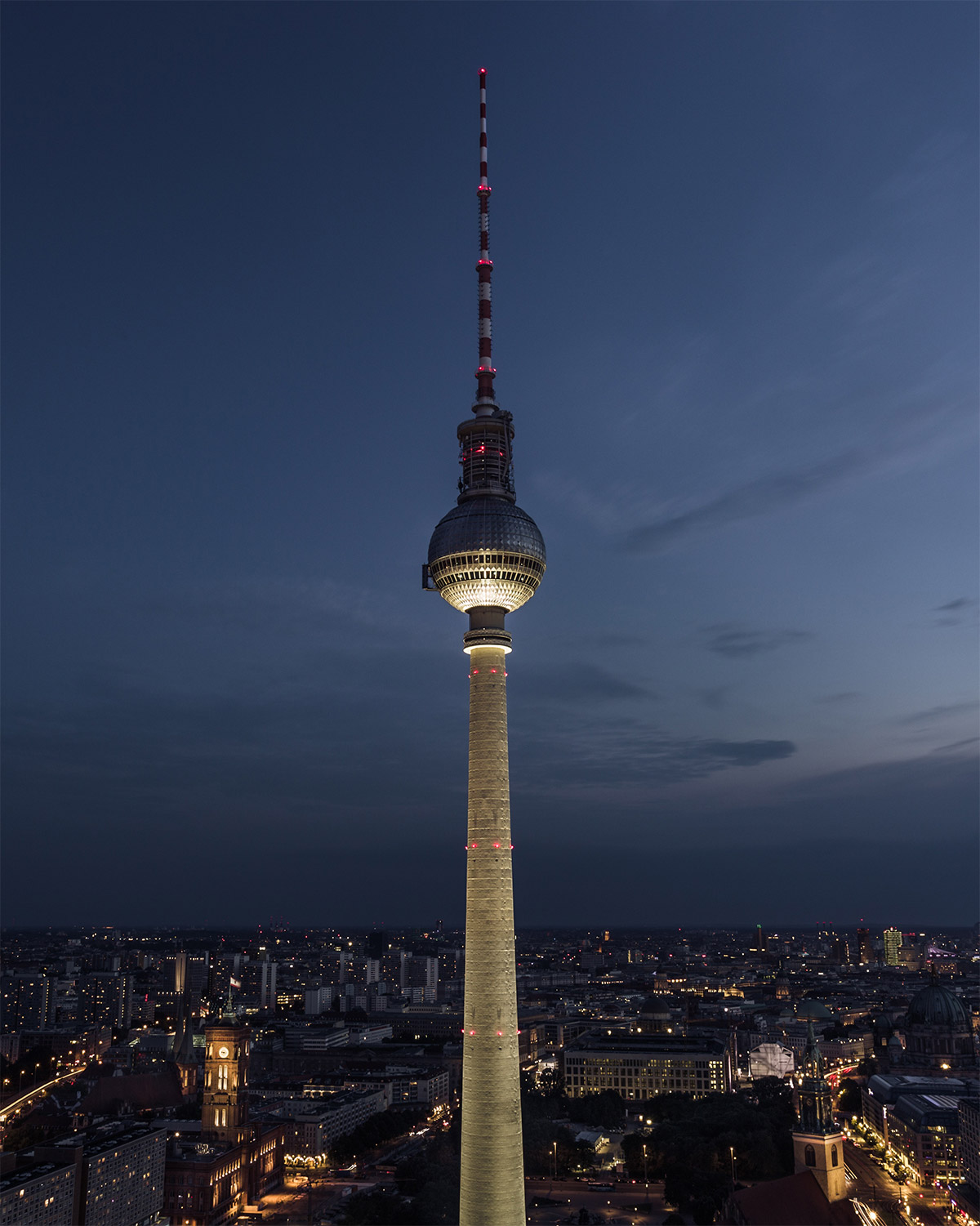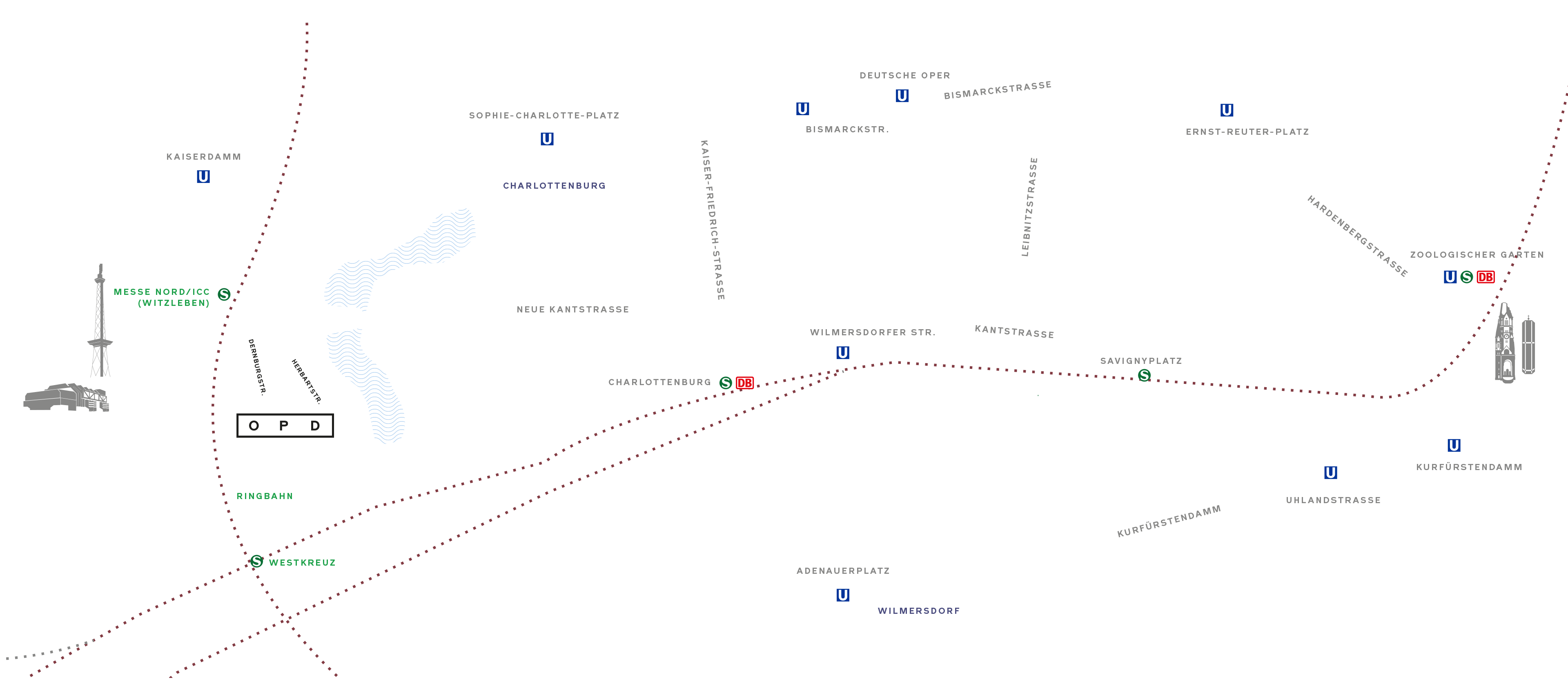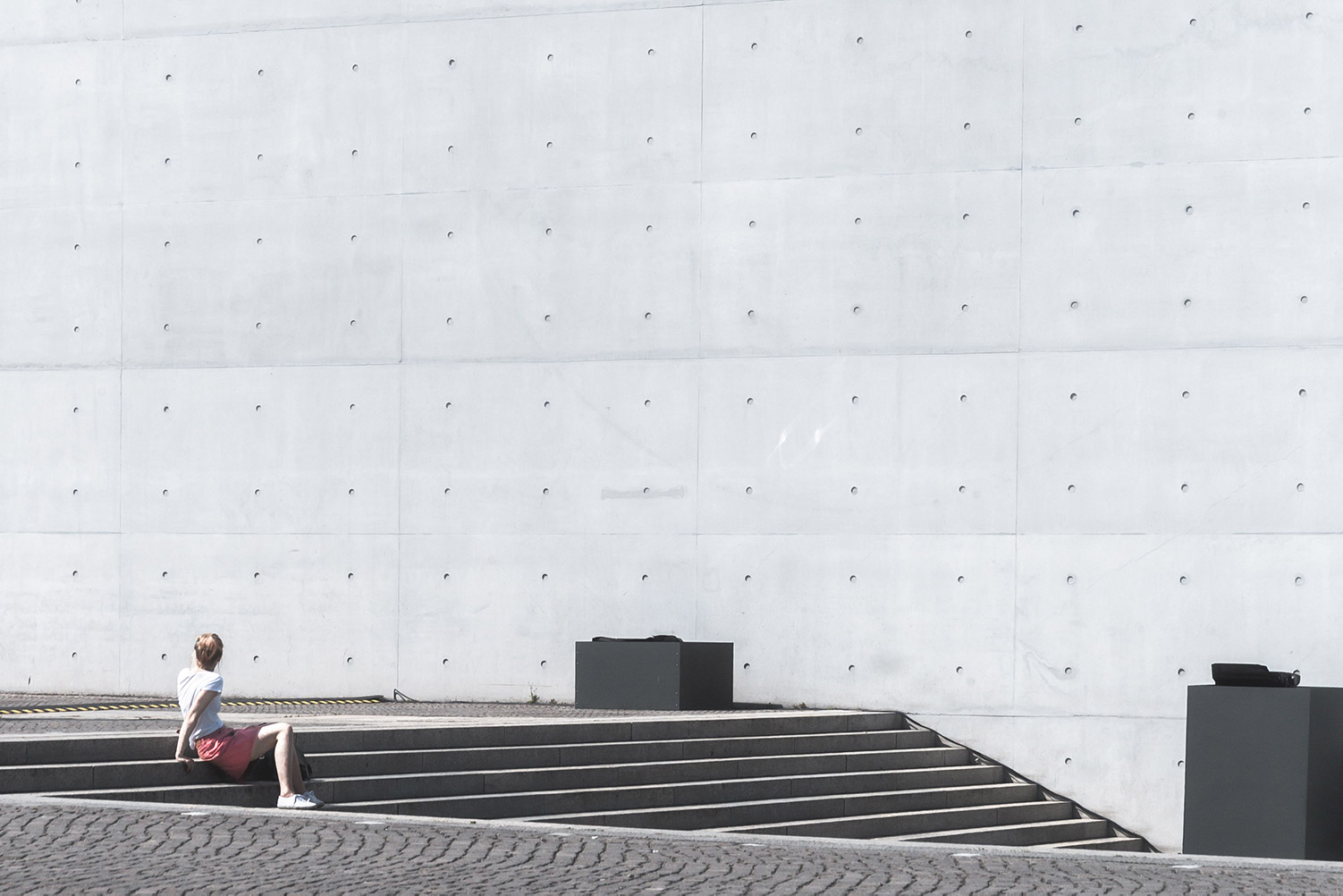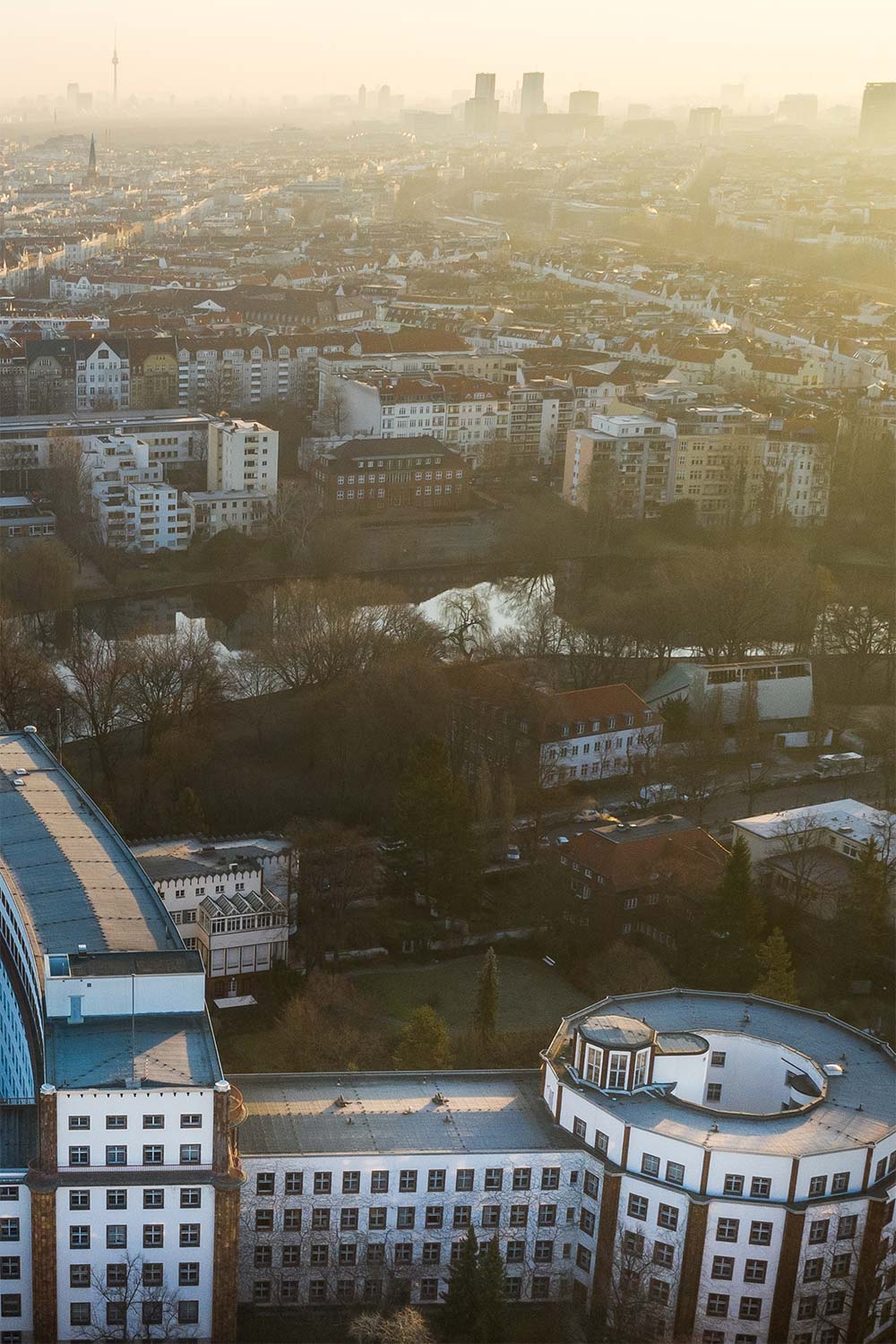City of
superlatives
Berlin draws you in. It’s the most attractive of all German cities. After all, it is home to almost 3.8 million people and 13.5 million tourists come to marvel at its sights every year – a record in Germany.
SO ATTRACTIVE, SO DYNAMIC, SO VERSATILE
Berlin is not only the political centre of Germany. It is also one of the most dynamic economic regions in Europe. The metropolis on the river Spree boasts an economic growth of 3 %, which far exceeds the German average of 2.3 %. Berlin is growing – there are 40,000 new business establishments per year and the number of people in employment is on the rise. Reason enough for many young professionals and international businesses to make Berlin their city of choice: in the capital, high-tech and service companies are thriving alongside a growing creative and media landscape.
Berlin offers attractions such as Funkturm, Mauerpark, Museumsinsel, Alex, Ku-Damm and many more, along with an excellent geographic location in the heart of the European Union. In its bustling neighbourhoods, the trends of tomorrow are dreamt up over a chai latte – this is where people live, celebrate, work or relax in one of the many green areas.

Berlin draws you in. It’s the most attractive of all German cities. After all, it is home to almost 3.8 million people and 13.5 million tourists come to marvel at its sights every year – a record in Germany.
SO ATTRACTIVE, SO DYNAMIC, SO VERSATILE
Berlin is not only the political centre of Germany. It is also one of the most dynamic economic regions in Europe. The metropolis on the river Spree boasts an economic growth of 3 %, which far exceeds the German average of 2.3 %. Berlin is growing – there are 40,000 new business establishments per year and the number of people in employment is on the rise. Reason enough for many young professionals and international businesses to make Berlin their city of choice: in the capital, high-tech and service companies are thriving alongside a growing creative and media landscape.
Berlin offers attractions such as Funkturm, Mauerpark, Museumsinsel, Alex, Ku-Damm and many more, along with an excellent geographic location in the heart of the European Union. In its bustling neighbourhoods, the trends of tomorrow are dreamt up over a chai latte – this is where people live, celebrate, work or relax in one of the many green areas.
Map of the area
CHARLOTTENBURG: WHERE THE QUEEN CELEBRATED AND THE HEART OF THE CAPITAL IS BEATING









































Oberpostdirektion
Dernburgstraße 50,
14057 Berlin Charlottenburg
Surroundings
ICC Berlin
7 min.
Messe Nord
10 min.
Funkturm
8 min.
Kurfürstendamm
10 min.
Schloss Charlottenburg
9 min.
Public Transport
Restaurants
1. La Pergola
2. Paella
3. Kultur café hafis
4. Au Lac im Seehof
5. Salumeria Rosa
6. Buschbeck’s
7. Engelbecken
8. Sale e Pepe Trattoria
Map of the area
CHARLOTTENBURG: WHERE THE QUEEN CELEBRATED AND THE HEART OF THE CAPITAL IS BEATING
Oberpostdirektion
Dernburgstraße 50,
14057 Berlin Charlottenburg
Surroundings
ICC Berlin
7 min.
Messe Nord
10 min.
Funkturm
8 min.
Kurfürstendamm
10 min.
Schloss Charlottenburg
9 min.
Public transport
Restaurants
1. La Pergola
2. Paella
3. Kultur café hafis
4. Au Lac im Seehof
5. Salumeria Rosa
6. Buschbeck’s
7. Engelbecken
8. Sale e Pepe Trattoria

Paris, London, New York, Berlin: the capital city on the river Spree has catapulted itself into the elite of cosmopolitan cities, outpacing other German cities. Rightly so.
NOTHING’S QUIET ON THE WESTERN FRONT
WHERE THE QUEEN CELEBRATED AND THE HEART OF THE CAPITAL IS BEATING
In 1910 – 15 years before the construction of Oberpostdirektion began – Charlottenburg became part of Berlin, as the 7th administrative district of the capital. The Roaring Twenties were approaching – especially here in the western part of the city. Around 1880, the construction boom gave rise to magnificent villas in Gründerzeit style, whilst artists met at the former Café des Westens – today’s Kranzler Eck – and turned the world of art and architecture upside down. It was only here in Charlottenburg, the sole district of Berlin to be named after a woman, that representatives of the “secession” were given opportunities to exhibit. Only here could the ideas of expressionism flourish.
CHARLOTTENBURG was a hotbed of bohemian culture, and it was none other than Queen Sophia Charlotte herself, who lay the foundation for the art-loving and celebratory mindset in the west of Berlin: 200 years earlier, the young spouse of Frederick I of Prussia had already celebrated lavish festivities in the palace named after her – inviting and supporting artists and philosophers.
FAST FORWARD to Charlottenburg 2019. City West never ceased to be the heart of the capital. The large reunification party of East and West Germany was celebrated here, and the magnificent villas from the Gründerzeit period rank amongst the most popular residential and commercial properties in the city. The impressive post office building on Dernburgstraße 50 – the former Oberpostdirektion between Kantstraße, Kurfürstendamm, Funkturm, and Messe – is part of the unbridled aspirational spirit in Berlin West.
And just a few minutes away, at Lietzensee lake, the hustle and bustle of the big city subsides. In the adjacent park, sunbathing lawns, playgrounds, and a beer garden invite you to relax and unwind right by the water.


